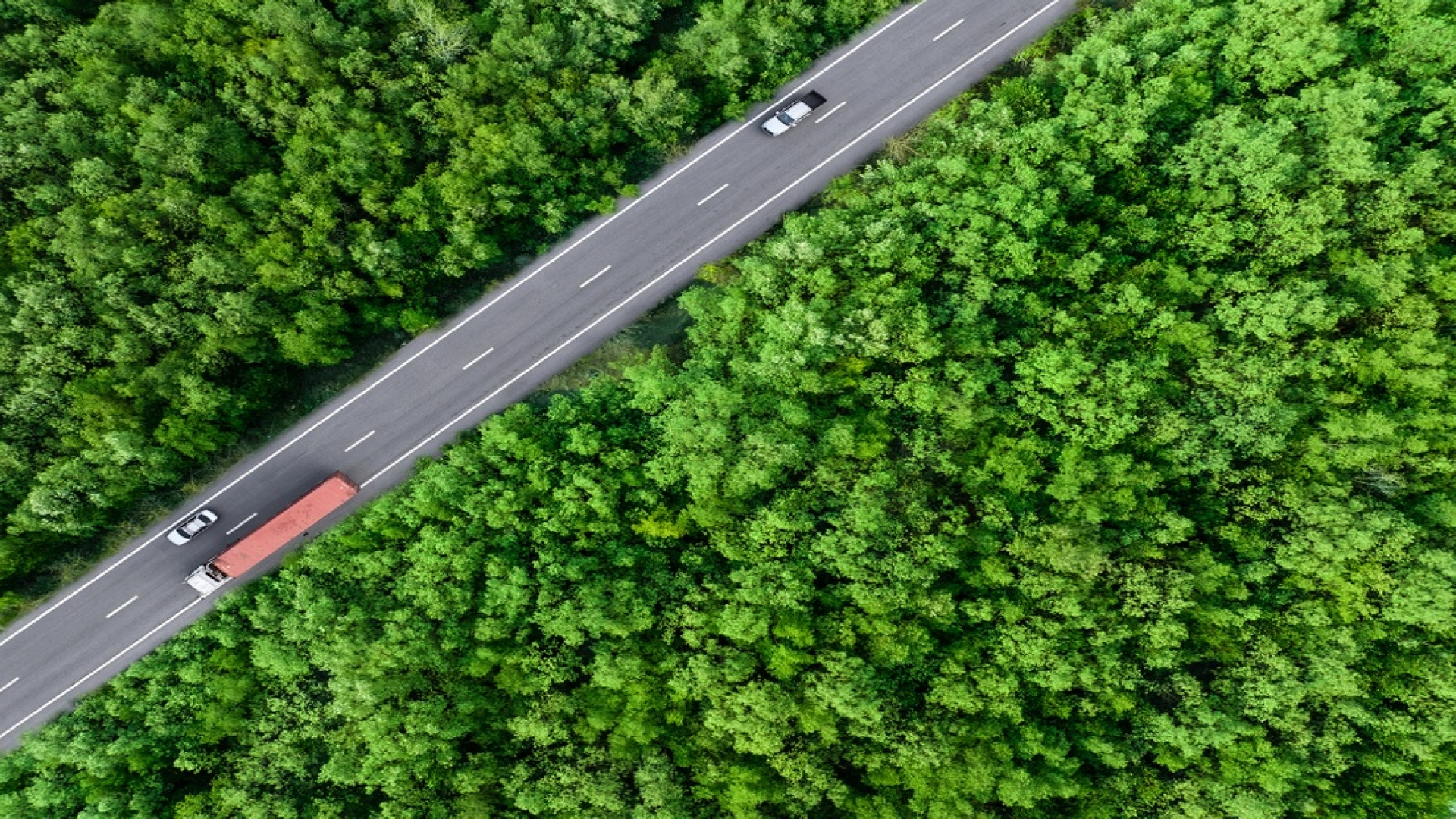Reducing Transportation Emissions Towards a Net-Zero Future
By Cummins Inc., Global Power Technology Leader

This article explores the importance of reducing transportation emissions, the concept of carbon footprints, and the various strategies employed to combat climate change and achieve a net-zero future.
Why is it important to reduce emissions?
Greenhouse gases (GHG) are molecules that accumulate in the atmosphere and lead to global warming. GHG emissions mitigation is the act of reducing the amount of greenhouse gases released into the atmosphere because of human activity. Some greenhouse gases such as methane are more potent than carbon dioxide. Since carbon dioxide persists over time and there's a lot of it in the atmosphere, it is the greenhouse gas with the greatest warming effect. The resulting temperature rise caused by greenhouse gases has several effects. These include the melting of ice, especially at the poles, which leads to loss of habitat, higher sea levels, and less fresh water. Further consequences can include more extreme weather events, damage to ecosystems and wildlife, loss of biodiversity, and land degradation.
Human activity and natural phenomena also give rise to air pollution which directly affects quality and can be harmful. Air pollutants include sulfur oxides, nitrogen oxides, volatile organic matter, and particulates. It is very important to monitor and reduce these emissions as much as possible as they have harmful effects on human health, water, soil, vegetation, and animals.
What is a carbon footprint?
A carbon footprint is the total amount of greenhouse gases produced by an individual or organization over a given period. It is an important measure to determine the impact of certain activities and find ways of reducing the effect on human health and the environment.
Reducing carbon footprints can be done at a personal level by being mindful of the way we live our lives, at a corporate level through strategy, and at a government level through policy. For businesses, this can be achieved by implementing energy-efficient building standards, reducing waste, and using renewable energy sources. Cummins Inc., for example, has a long-range business strategy with an environmental lens to address climate change, natural resource use, and improving communities. Its PLANET 2050 environmental sustainability strategy has quantifiable goals timed to 2030, as well as aspirations for 2050. Cummins’ strategy to meet PLANET 2050’s product GHG reduction goal is called Destination Zero.
Governments can implement policies to induce companies to reduce their carbon footprint. They can introduce carbon taxes or provide incentives for renewable energy and low carbon solutions. The European Union, for example, is planning to regulate the amount of emissions that can be caused by vehicles made by each truck manufacturer. In the U.S., the federal government has created extremely attractive incentives that promote carbon capture, hydrogen, biofuels, and other forms of renewable energy. When accounting for carbon emissions, it is important to do so through the well- to-wheel emissions analysis. It considers the total energy consumption and greenhouse gas emissions throughout the entire life cycle of an energy source.
How can we reduce emissions from transportation?
Transportation has one of the largest carbon footprints in the U.S., accounting for over a quarter of greenhouse gas emissions1. Reducing emissions from transport must be a major focus in the coming years. This can be done through the development and adoption of more efficient advanced diesel engines, electrification, and use of other low carbon fuels.
At Cummins Inc., the path to zero emissions involves pursuing two avenues. We develop advanced internal combustion engines that are ready for immediate deployment. These engines use a variety of fuels ranging from advanced diesel and renewable diesel to renewable natural gas and hydrogen. Concurrently, Accelera by Cummins is leading the way in pioneering zero-emission solutions such as battery electric and hydrogen fuel cell powertrains. Cummins estimates that advancing in both areas will contribute to 1.4 gigatons of cumulative carbon reduction. That's the equivalent of eliminating all trucks from the road for a duration of three years.

Can we achieve net zero?
Net-zero emissions refers to an equilibrium where the amount of greenhouse gases released into the atmosphere is equal to the amount removed. There will always be some level of GHG emissions as part of critical activities, so these emissions must be offset.
Net zero is achievable, but it must be met quickly to prevent further irreversible damage due to climate change. Global temperature increase levels are at 1.5°C compared to pre-industrial levels. With current increasing global energy demand trends and level of commitment from governments, this is expected to increase to 3°C and beyond towards the middle of the century. Cummins intends to lead by example and is committed to supporting its customers who seek to achieve zero emissions.
Author Profiles

Cummins Inc., Global Power Technology Leader
Cummins Inc., a global power solutions leader, comprises five business segments - Components, Engine, Distribution, Power Systems, and Accelera by Cummins - supported by its global manufacturing and extensive service and support network, skilled workforce and vast technological expertise. Cummins is committed to its Destination Zero strategy - the company's commitment to sustainability and helping its customers successfully navigate the energy transition with its broad portfolio of products. Cummins has approximately 69,900 employees and earned $3.9 billion on sales of $34.1 billion in 2024. See how Cummins is leading the world toward a future of smarter, cleaner power at www.cummins.com.